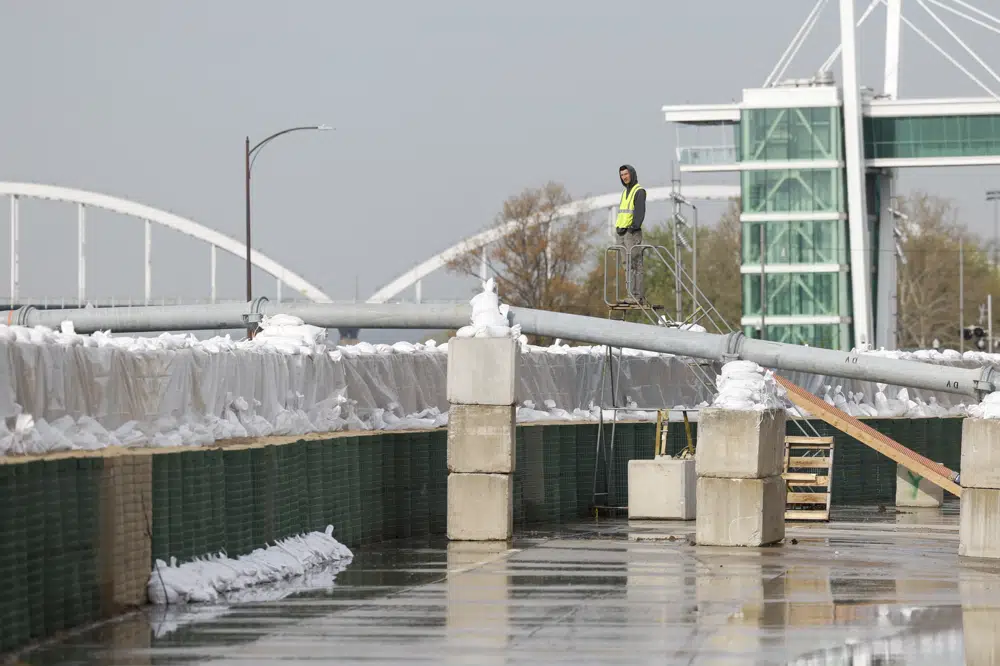Rising Mississippi River tests Iowa, Illinois flood barriers

Daven Port, The Gulf Observer: The rising Mississippi River tested flood defenses in southeast Iowa and northwest Illinois as it neared forecast crests in the area Monday, driven by a spring surge of water from melting snow.
The peak water levels this spring will likely rank in the top 10 of all time in many places, but the National Weather Service said river levels will generally remain well below past records. That should help most towns along the river withstand the floodwaters, though officials will be checking their floodwalls and sandbag barriers closely in the next few days.
Officials in towns along the river have said they are optimistic they will escape severe flooding this year, thanks to improved floodwalls and other prevention measures.
“Everybody’s plan along the river has been put to the test and everybody is passing right now,” National Weather Service hydrologist Matt Wilson said from the Quad-Cities office.
Two minor levee breaks were reported over the weekend near a wildlife refuge south of Bellevue, Iowa, and in Camanche, Iowa, that covered a couple streets with water, but Wilson said no homes were damaged, and officials were able to build a new sandbag barrier in Camanche to bring that flooding under control.
The river peaked in the Dubuque area Saturday at 23.03 feet (7 meters) — well below the 25.7 feet (7.8 meters) record — but officials there were grateful to have the floodwall the city built 50 years ago in place.
Without that floodwall, the city would be facing significant problems, said Deron Muehring, a civil engineer for the city of Dubuque.
“The floodwaters would be up to 6 feet deep in the Port of Dubuque and more than 7 feet deep in the south port,” Muehring told the Dubuque Telegraph-Herald.
The river is expected to crest at around 21.6 feet (6.6 meters) on Monday in the Quad-Cities area, where several neighboring cities sit along the Iowa-Illinois line. Some roads and parks near the river are closed. The record at that spot is 22.7 feet (6.9 meters).
Once the river crests in an area, it may take up to two weeks for the floodwaters to fully recede.
The flooding is expected to ease as the spring surge of water from melting snow works its way further down the 2,300-mile (3,700-kilometer) length of the river on its way to the Gulf of Mexico. Most of the tributaries in Iowa, Illinois and other Midwest states are running lower than usual, so they won’t exacerbate the flooding by dumping large amounts of water into the river.
The flooding woes come as Florida and Virginia residents are cleaning up from weekend tornadoes.
On Saturday, a tornado touched down in Palm Beach Gardens, Florida, with winds of 100 mph (160 kph), while a tornado moved through the City of Virginia Beach on Sunday, damaging dozens of homes, downing trees and causing gas leaks.


